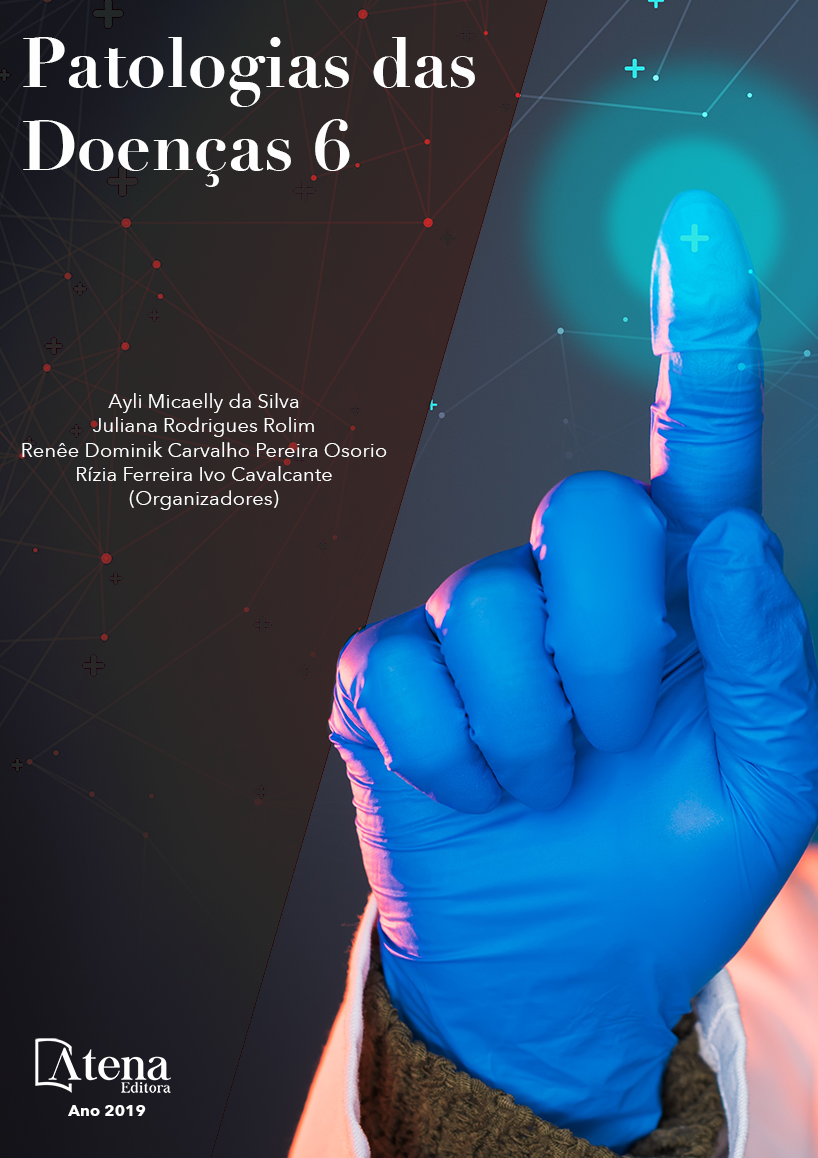
ASPECTOS EPIDEMIOLÓGICOS DA COQUELUCHE NO ESTADO DO PIAUÍ EM MENORES DE UM ANO
A coqueluche é uma doença
infecciosa aguda, de distribuição universal,
causada pela Bordetella pertussis, e em casos
raros pela Bordetella parapertussis. É uma
afecção altamente contagiosa, de notificação
compulsória e que acomete principalmente
crianças não vacinadas. Os sintomas afetam
o sistema respiratório e aparecem de forma
gradual em três fases: catarral, paroxística e de
convalescência. É uma doença imunoprevenível,
no entanto a imunidade dada pela vacina, por
mais que seja duradoura, não é permanente.
Na América Latina, os casos da doença
praticamente triplicaram nos últimos anos.
No estado do Piauí, o número de casos vem
aumentando de forma crescente nos últimos 5
anos. O objetivo deste estudo é analisar o perfil
epidemiológico da coqueluche em menores de
um ano no estado do Piauí entre os anos de 2014
e 2017. Trata-se de uma pesquisa descritiva e
retrospectiva, realizada a partir das informações
obtidas na base de dados online do sistema de
informação de agravos de notificação (SINAN).
Durante o período estudado houveram 284
casos notificados, sendo 95,4% ocorrido na
capital Teresina e apenas 4,6% aconteceram
no interior do estado. A Zona Urbana foi a mais
acometida com 81,1%. Entre o total de casos, o
sexo feminino foi ligeiramente mais acometido
com 51,4%. Em relação a etnia, ficou constatado
a predominância de Pardos (64,1%), seguido por
Brancos (31,3%), Negros (3,2%), Amarelo (1%)
e Indígenas ( 0,4%). A letalidade foi de 0,7% e
apenas 8% tiveram confirmação laboratorial.
Observa-se, portanto, a elevada incidência
dessa doença em crianças com menos de um
ano de idade, visto que são mais susceptíveis
a infecções devido ao sistema imunológico
imaturo e ausência da vacina tríplice bacteriana
acelular DTaP (Difteria, tétano e coqueluche).
Diante do exposto, conclui-se que panorama
da coqueluche no Piauí vem se mostrando
desfavorável nos últimos anos, uma vez que a
prevalência em menores de um ano aumentou
no período de tempo estudado, portanto existe
a necessidade de ampliar a cobertura vacinal
das crianças e das gestantes afim de reduzir a
incidência da doença.
ASPECTOS EPIDEMIOLÓGICOS DA COQUELUCHE NO ESTADO DO PIAUÍ EM MENORES DE UM ANO
-
DOI: 10.22533/at.ed.1421925037
-
Palavras-chave: Bordetella pertussis; Coqueluche; Epidemiologia; Crianças.
-
Keywords: Bordetella pertussis; Pertussis; Epidemiology; Children.
-
Abstract:
Pertussis is an acute infectious
disease of universal distribution caused
by Bordetella pertussis, and in rare cases
by Bordetella parapertussis. It is a highly
contagious, notifiable condition that mainly
affects unvaccinated children. The symptoms
affect the respiratory system and appear
gradually in three phases: catarrhal, paroxysmal
and convalescence. It is an immunopreventable
disease, however the immunity given by the
vaccine, however durable, is not permanent.
In Latin America, cases of the disease have
practically tripled in recent years. In the state of
Piauí, the number of cases has been increasing
in the last 5 years. The objective of this study is to
analyze the epidemiological profile of whooping
cough in children under one year of age in the
state of Piauí between the years 2014 and 2017.
This is a descriptive and retrospective study,
Patologia das Doenças 6 Capítulo 7 57
based on the information obtained in the online database of reporting system (SINAN).
During the study period there were 286 reported cases, 95.4% of which occurred in
the Teresina capital and only 4.6% occurred in the interior of the state. The Urban
Zone was the most affected with 81.1%. Among the total number of cases, the female
sex was slightly more affected with 51.4%. Regarding ethnicity, Pardos predominated
(64.1%), followed by Whites (31.3%), Blacks (3.2%), Yellows (1%) and Indigenous
people (0.4%). The lethality was 0.7% and only 8% had laboratory confirmation. The
high incidence of this disease in children under one year of age is therefore observed,
since they are more susceptible to infections due to the immature immune system
and absence of the acellular bacterial triple vaccine DTaP (Diphtheria, tetanus and
whooping cough). In view of the above, it is concluded that the pertussis scenario in
Piauí has been unfavorable in recent years, since the prevalence in children under
one year increased in the time period studied, therefore there is a need to expand
the vaccination coverage of children and of pregnant women in order to reduce the
incidence of the disease.
-
Número de páginas: 15
- WENYA CRISTIANA DE ALMEIDA ABREU
- JOSÉ RAFHAEL SILVA RODRIGUES
- RAPHAEL FORMIGA MEDEIROS
- ANTONIO NELSON ALENCAR DE PEREIRA ARAÚJO
- AYANA CARTAXO FORMIGA
- NATHALIE RAMOS FORMIGA ROLIM
- ALMI SOARES CAVALCANTE
- THAISE DE ABREU BRASILEIRO SARMENTO
- MANOEL MARCELO SARMENTO
- THALES VICTOR RUAN FERNANDES FERREIRA
- LIDIA MARIA LÍDIO DE OLIVEIRA
- AYLI MICAELLY DA SILVA
- VICTOR MATIAS COUTO
- VIVIANE DE SOUSA SANTOS
- JULIANA RODRIGUES ROLIM
- VIVIANE DE CÁRITA CARVALHO OSÓRIO PRUDÊNCIO
- RÍZIA FERREIRA IVO CAVALCANTE
- DENISE PARENTE PINHEIRO MIRANDA
- FABIANE GOMES PEREIRA
- ENOQUE PARENTE PINHEIRO MIRANDA
- LUANNA FERREIRA IVO CAVALCANTE
- KAYO FERNANDES FLORÊNCIO
- RODRIGO RUFINO PEREIRA SILVA
- JOYCE FLÁVIA DA SILVA LEAL
- RENEE DOMINIK CARVALHO PEREIRA OSÓRIO


